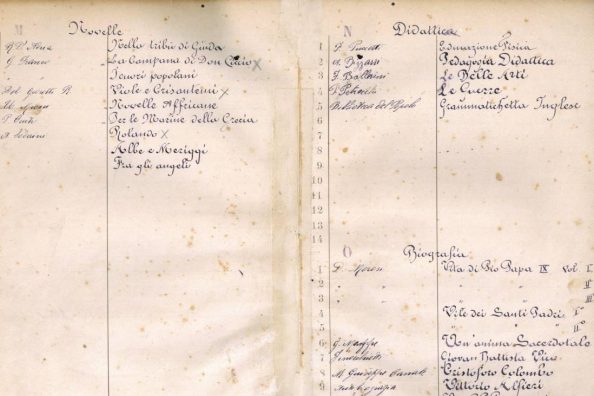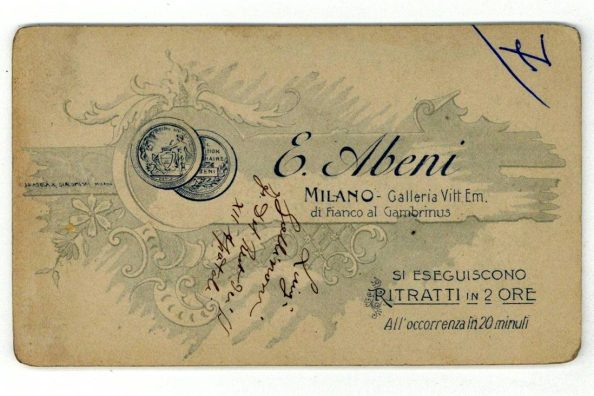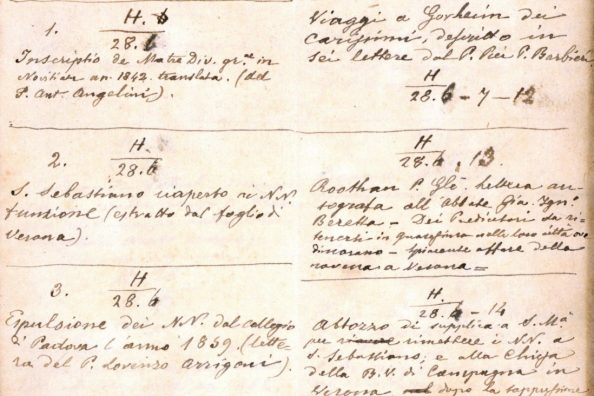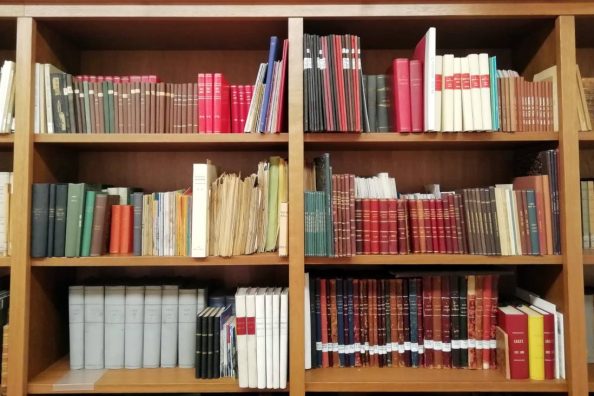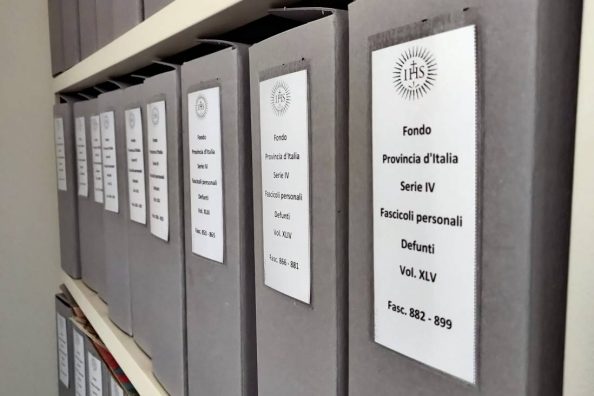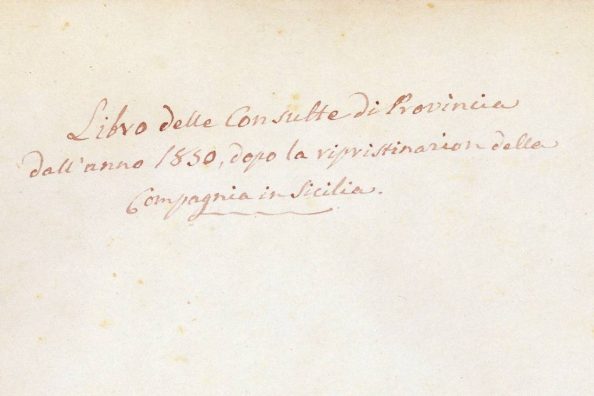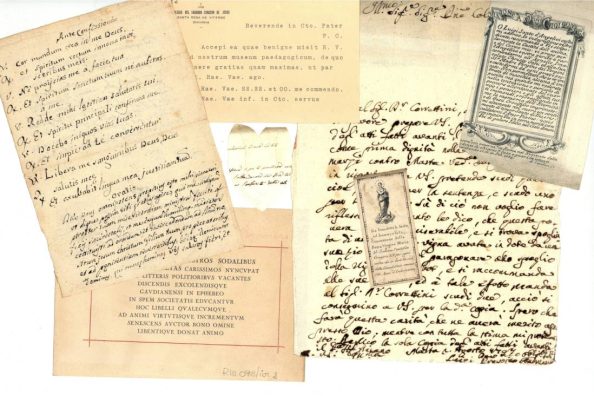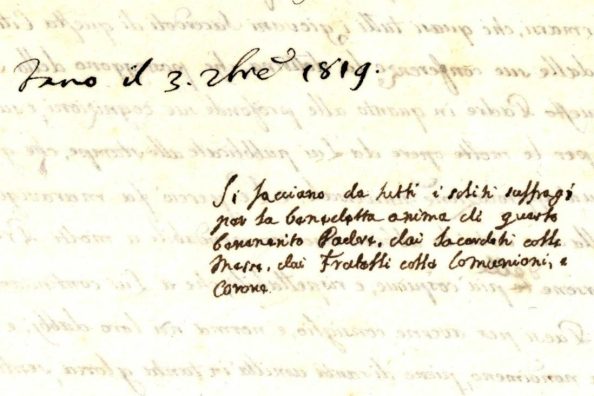Jesuits in Italy during the political turbulence of 1848
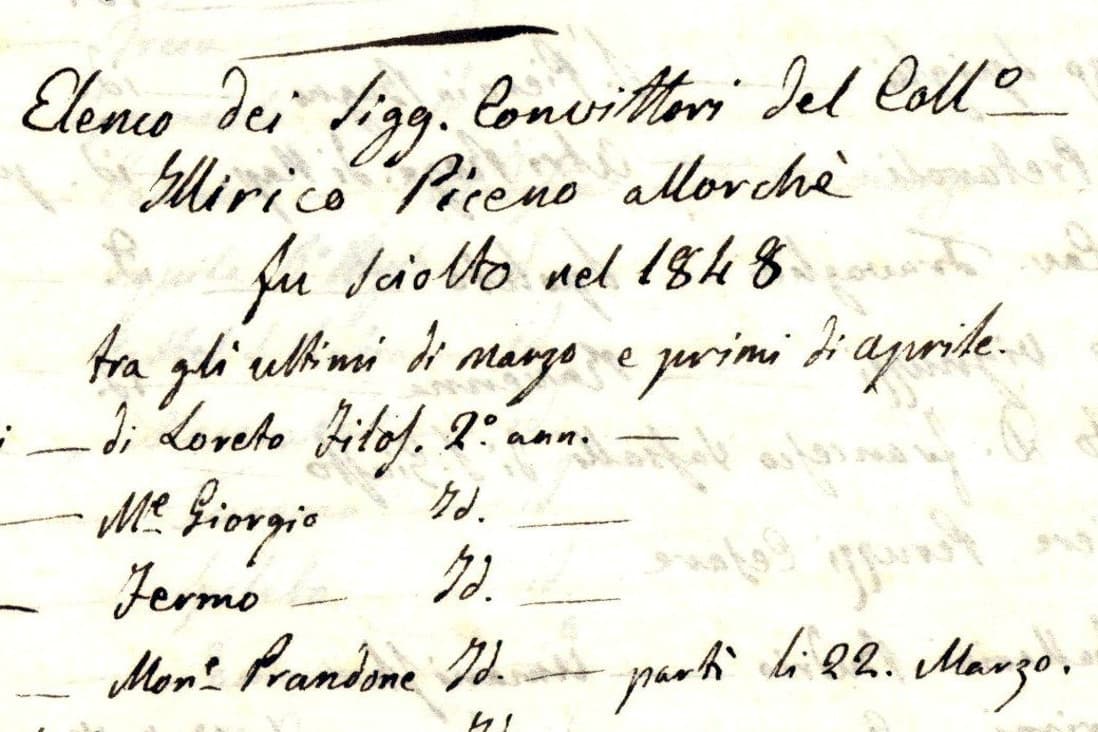
What happened to the Jesuits in 1848 in Sardinia, Genoa and the cities of the Papal States? These are just some of the possible case studies that can be investigated thanks to the documentation in our Archives.
The revolutionary year
The Italian saying ‘è tutto un ’48’ (‘everything is a ’48’) derives from the revolutionary year 1848 that inflamed the whole of Europe. People rose up demanding a constitution, in many cases to obtain the unity of their nation and generally to overthrow oppressive regimes.
Turmoil and political upheaval also affected the lives of the many Jesuit communities who, in many cases, were forced to flee or go into exile, seeing all their property expropriated, as happened to other religious orders. It was often the last year of activity for colleges and residences in many cities.
A review of 1848: the Roman Province
1848 was a real bad year for the Society of Jesus, especially in the Old Italian States, often causing documentary gaps in the archives of residences and colleges.
In the Roman Province alone in that year there were eight abandonments of as many residences. In the fonds of the Roman, Veneto-Milan and Turin provinces there are letters and reports that help us retrace those dramatic weeks and months in the rest of the peninsula as well.
In some cases, the signs of the political climate can also be found in apparently irrelevant episodes, such as what happened to three Jesuits on the morning of 26 February 1848 in Gubbio.
A memory, preserved in the Fondo della Provincia Romana, tells us that that morning: ‘the Gubbio people accompanied them for a good stretch towards Perugia with shouts, whistles. The bishop was forced to intervene and write a public letter to his faithful, reprimanding the insults received by the religious.
Precisely in the towns near Gubbio, insurrections would lead to the flight of many Jesuits and religious a few weeks later. Fano, Ferrara, Forlì, Loreto, but also Velletri, Rome, Naples, are just some of the cities for which archive documentation testifies to riots that also affected Jesuits, forcing them to leave their residence temporarily, sometimes forever. From the diary of the Fermo college we read:
23 March 1848 at 3pm expulsion of the Jesuits from Fermo and their deportation to Macerata where they were taken by the armed Fermani Civici.
Everywhere a ’48: Sassari
The revolutionary winds blew all the way to Sardinia, knocking one day at the doors of the Jesuit college in Sassari, but the first warnings were recorded a few months earlier. On the evening of 13 November 1847, Fr Paolini, returning from the Episcopio, heard from another priest:
heard that in the square in front of S.. The hymn was a national hymn, and the novelty of the sentiments and the manner in which it was sung attracted curious mottos from all around, which, as simple spectators, soon took part in the demonstration, and then, singing, they made their way with the growing crowd towards the governor’s palace. The sentry, seeing the unusual thing, wanted to oppose it, but opposition to a great multitude would have been not only useless, perhaps even dangerous, so the governor warned the crowd, made himself known and ordered that the crowd be allowed to advance. The crowd liked this act of confidence, and with great enthusiasm burst out in cheers for the king, for Italy, for independence, for the Italian League, the news of which had been shot a short time before [la notizia] in Sardinia [… ] passing along our College, they made a repeated hurrah for Gioberti […].
The Jesuit then recounts another passage when it happened the following day:
After lunch on that day, the usual Eucharistic service took place in our church. When, at the beginning of the usual discourse, a clamour was heard and many banners entered, led by Signor Filippo Ponzeveroni, nicknamed Ciceruacchio Sassarese.
P. Paolini and another confrere, in the following weeks experienced protests from the university students who welcomed the religious to the cry of ‘get the Jesuits out’, deciding to flee to Alghero. Meanwhile, tensions were rising in Sassari:
On the evening of 23 February, there was a large crowd around the college, shouting loudly that they wanted the Jesuits out. The Fr. Rector took great fright, and at the suggestion of his friends, and apparently also on the advice of the city’s superiors, it was decided to evacuate the house: The church was closed and the keys were handed over to two delegates of Archbishop Monsignor […] the house was also closed and the keys were handed over to the second mayor on behalf of the city, and to Under Major Cavalier Ricci on behalf of the government; thus in a moment the church services were suspended, the fulfilment of the legates was suspended, the celebration of mass was suspended, as if an interdict had struck the house of God. Suspended was the use of the rights that had so many to the free squares in the boarding school, suspended the schools, suspended the administration of the company.
Fr Paolini’s report is very long and detailed, it is about 18 handwritten pages, in the same file there are other memoirs on what happened to the Jesuits in 1848.

1848 in Genoa
In the same weeks also in the residence in Genoa the daily life of the community is disrupted, here is a collection of what happened, recorded in the archival documentation:
The discontinuation proceeded in this manner. On the evening of 5 March, a Sunday, the tax lawyer and his secretary came to our house in Montebello, together with Canon Fava, Intendant of the Bursar’s Office, who, on behalf of the government, demanded the immediate departure of the prisoners, requesting the handing over of all their belongings, both movable and immovable, and were given only half an hour to prepare for their departure, They did not listen to any of the reasons our men gave, especially as to where they could spend the night, if not on the public highway, and Brother Rubbatino could not restrain himself from saying to them (seeing such a barbaric proceeding) ‘even those condemned to the gallows are allowed three days’ delay, and we are not even allowed half an hour? “.
The people flocked to us, signifying with almost universal weeping the grief they felt at seeing us leave. As soon as the parish priest heard about this, he immediately went in person to our people and wanted to give them accommodation and whatever they needed, although he was in a tight spot, but he helped them as best he could. There were five of us there: two fathers and three coadjutor brothers. Father Paviani, procurator, protested against the unjust usurpation of our property, and as soon as our people left the house, seals were placed on every side. There were no personal insults, however, and things were carried out with order and tranquillity.
The escape route
Once the Jesuits had been warned and given time to gather their belongings, they had to leave the residence, which was either placed under seal or taken over immediately by the state authorities.
What do we know about the escape route and the difficult days of exile? Some aspects can be reconstructed thanks to other documents. In the fonds of the Province of Turin, there are some receipts that tell us about the journey of the Jesuits fleeing Sardinia.
These are two receipts, one from the Royal Brick schooner ‘Staffetta’, one from the Royal Brigantine pole-vaulter ‘Aurora’.
The relay had transported from 27 March 1848 to 5 April ‘seventeen individuals of the Society of Jesus’ embarked by order of the Vice King, a total of 257, 53 lire had been required – not including the Lira of the Kingdom of Italy not yet in force – divided as follows: 198.16 paid on embarkation, 34.37 once on board, while 25 lire was the fee for the cook and servant.
This receipt gives us no further information, but the second document allows us to follow the Jesuits on their journey. On 15 March as many as 24 Jesuits embarked from Cagliari on the royal pole brig ‘Aurora’, the journey would last until the 26th of the same month. The documentation does not specify what the destination was, another document specifies “for the voyage to the Mainland”, we hypothesise that the port of destination was Genoa, since the receipts were found in the folders relating to Genoa and also because the Sardinian Jesuit residences depended on the Province of Turin and the port of reference could have been Genoa or one of the Ligurian ones.
The second document records the provisions, food and objects that the Jesuits manage to take with them and for which they pay: meat for roasting; Butirro; Bread; Meat for boiling; Gardi; Ox tongues for stewing; Lard; Lard; Cheese from Piacenza; Eggs; Sugar; Coffee; Potatoes; Hens; Vegetables (spinach); A knife, 2 spoons; Fish; Bacalà; Lard; Lemons; Bottiglioni; Biscuit bread.
In the last part of Fr Paolini’s report, he recounts his voyage aboard Captain Marengo’s bombard ‘La Provvidenza’, there is also room for a little anecdote:
A large tide made it hard to proceed. We stopped here for two and a half days, and on the morning of the third day, we had fun catching castanets, which are a kind of oysters almost a palm and a half long: the innards are eaten and make a very tasty soup, and the barbette, with which these oysters are attached to the seabed, gives a kind of wool, the colour of dark gold, which is spun and used to make special gloves. This sea-bed particularly abounds in it, and elsewhere it is very rarely found.
The fabric of which the Jesuit speaks is byssus, a yarn that only very few artisans in Sardinia are now able to work. The Jesuit continues his tale, picking up from the moment the voyage began:
On board the sailing vessel, everyone knew that we were Jesuits, although we were disguised, in secular clothes and although almost everyone was Genoese, nevertheless they used us a great deal of courtesy and respect.
The Jesuits, on their way to Genoa, were not allowed to enter the city, as they were recognised as members of the Society, so to avoid further disturbances they were put on a steamer bound for Civitavecchia. Only when they disembarked did they learn that the brethren in Rome were also missing and that even the Urbe was not safe.
In Sassari the Jesuits never returned. Elsewhere, some colleges were reopened but for a not very long period. A little more than a decade later, Garibaldi’s ascent of the boot and the subsequent proclamation of the Kingdom of Italy decreed the forfeiture of the residences and colleges reopened after 1848.
From ’48 to the Unification of Italy
We have previously recalled the story of the Jesuits of Velletri, who were forced to leave the city. Although these events occurred ten years after 1848, it is clear that the historical political climate was the same only three years after the Unification of Italy and twelve after the end of the Papal State.
Maria Macchi

